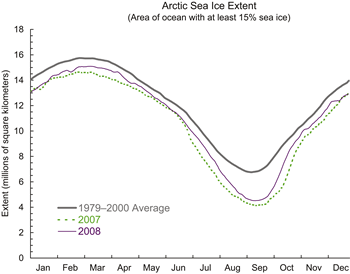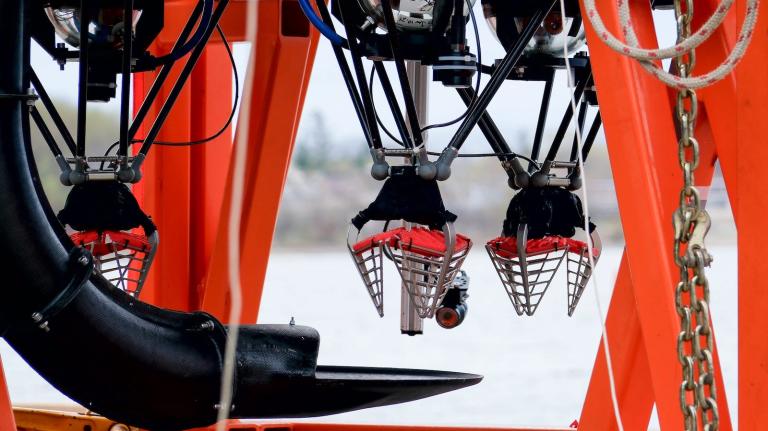Arctic sea ice extent just dipped below January 2007 levels in the last few days, according to the daily time series from the National Snow and Ice Data Center:
The NSIDC notes that they are showing the data from 2007 on this figure since that year “went on to reach the lowest summer minimum in the satellite record."
The NSIDC also has an interesting 2008 Year-in-Review for cryosphere buffs. It explains why the ice stopped growing for a week in mid-December. It also has an interesting graphic comparing the Arctic sea ice extent in 2008 with 2007:
 The day by day meanderings of Arctic sea ice extent are not overly meaningful yet, but I think they are worth reporting because it bugs the deniers to see any evidence whatsoever that the world is not undergoing global cooling.
The day by day meanderings of Arctic sea ice extent are not overly meaningful yet, but I think they are worth reporting because it bugs the deniers to see any evidence whatsoever that the world is not undergoing global cooling.
More seriously, we may well be on track to set a record this year, especially given that, according to NSIDC, 2008 was a year of “Likely Record-Low Volume.” We are literally on thin ice.
We are also figuratively on thin ice because what happens to the Arctic ice has serious implications for the whole planet. Thanks to polar amplification, the loss of the highly reflective ice accelerates the warming in the entire Arctic (via increased absorption of sunlight) and that in turn threatens the most potentially volatile carbon sink — the tundra.
As always, I’m still trying to get more bets that the Arctic won’t be ice free by 2020.
This post was created for ClimateProgress.org, a project of the Center for American Progress Action Fund.



